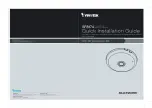
9
Flash Card Slots
78-4339-09
Product Overview
Flash Card Slots
The GRP includes two Flash card slots. Either slot can support an ATA Flash disk or a linear Flash
memory card.
Note
The GRP only su5VDC Flash card devices. It does
not
s3.3VDC Flash card devices.
All combinations of different Flash card devices are supported by the GRP. You can use ATA Flash disks,
linear Flash memory cards, or a combination of the two. Each slot has an ejector button for ejecting a
card from the slot.
Note
Linear Flash memory cards may not have the capacity to meet the requirements of your
configuration. However, they can be used for emergency file recovery applications.
Asynchronous Serial Ports
Two asynchronous serial ports on the GRP, the console and auxiliary ports, allow you to connect external
serial devices to monitor and manage the system. The console port is an Electronic Industries
Association/Telecommunications Industry Association (EIA/TIA)-232 receptacle (female) that provides
a data circuit-terminating equipment (DCE) interface for connecting a console terminal.
Note
EIA/TIA-232 was formerly RS-232.
The auxiliary port is an EIA/TIA-232 plug (male) that provides a data terminal equipment (DTE)
interface; the auxiliary port supports flow control and is often used to connect a modem, a channel
service unit (CSU), or other optional equipment for Telnet management.
Ethernet Port
The GRP has one Ethernet port available, using one of the following connection types:
•
RJ-45 receptacle—8-pin RJ-45 receptacle for either IEEE 802.3 10BASE-T (10 Mbps) or
IEEE 802.3u 100BASE-TX (100 Mbps) connections.
•
MII receptacle—40-pin media independent interface (MII) receptacle that provides additional
flexibility in Ethernet connections. The pinout of this standard 40-pin receptacle is defined by the
IEEE 802.3u standard.
Note
The RJ-45 and MII receptacles on the GRP represent two physical connection options for
one
Ethernet interface; therefore, you can use
either
the RJ-45 connection
or
the MII connection, but not
both simultaneously.
The transmission speed of the Ethernet port is auto-sensing and is determined by the network to
which the Ethernet interface is connected; it is not user configurable. At the auto-sensed data
transmission rate of 100 Mbps, the Ethernet port provides maximum usable bandwidth that is less
than 100 Mbps; a maximum usable bandwidth of approximately 20 Mbps can be expected if you use
either the MII or RJ-45 connection.










































